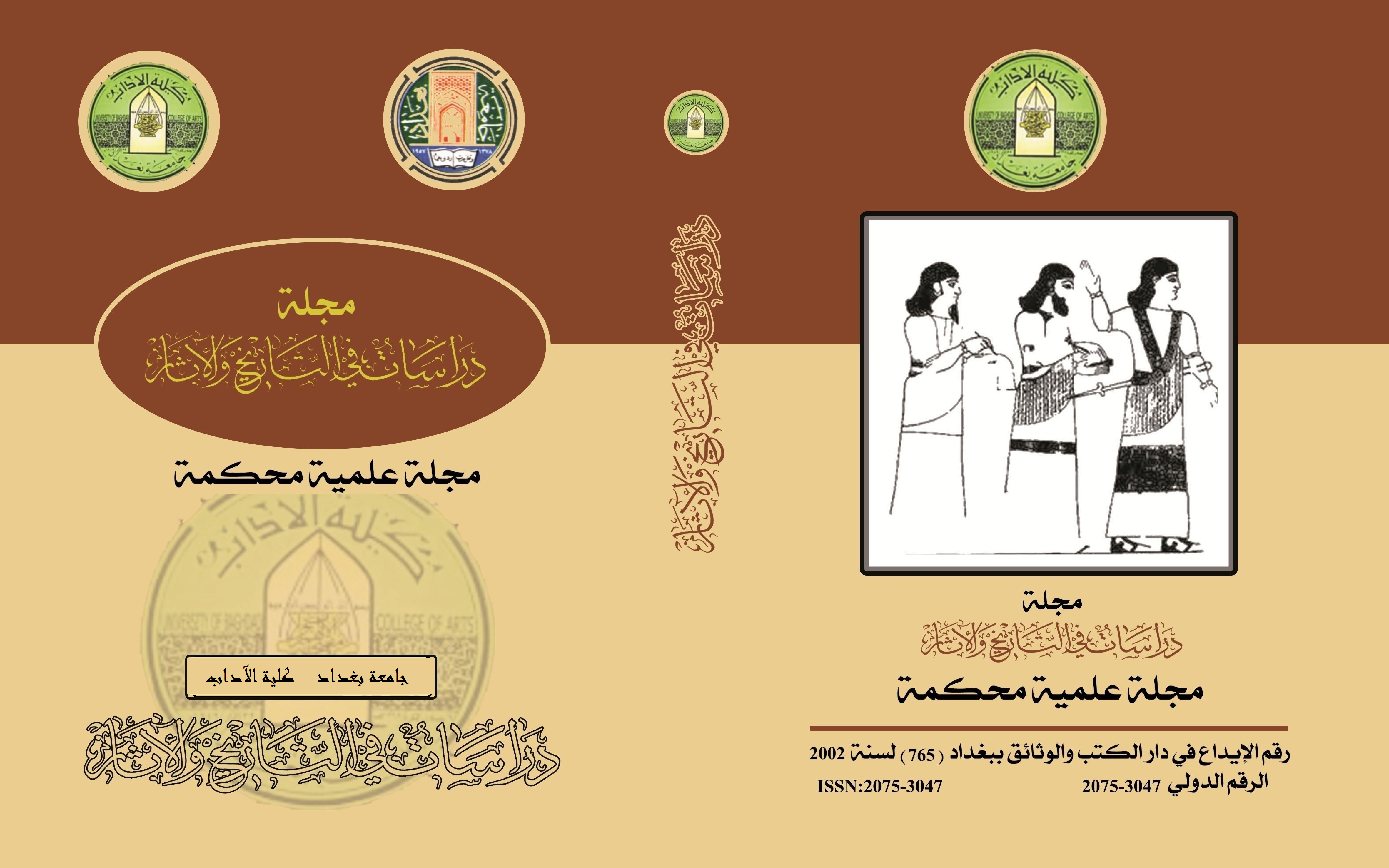The Medici family's support of Renaissance art
Keywords:
Renaissance, Florence, Medici, the artAbstract
The Medici family had a prominent and effective role in the Renaissance era, especially in Florence, which was the center of European Renaissance thought, especially in the fifteenth and sixteenth centuries, that is, at the height of the power of the Medici family, which in turn was keen to sponsor several cultural aspects, most notably art and artists, and to focus on the owners of The New Thought, that is, the creative people among them, were keen to have a personal relationship with them, and that family harnessed the intelligence of art to spread the ideas that it supports, including spreading classical thought by embodying those ideas artistically, as well as publishing and embodying some political ideas, the most important of which is the theory of absolute rule.
At the same time, the family possessed the resources and personal leadership of its leaders to be ranked among the first among European families in support of art and artists, although this trend brought upon them the lurk of the papacy, since most of those ideas that the family supported, sometimes openly and sometimes secretly, were forbidden and forbidden by them. The Church, especially with regard to classical and humanistic thought, but that did not prevent the family, which has major economic interests with the papacy, from continuing its support for those ideas, their art, and their artists.
References
اروى خالد علي مصطفى، الاوضاع السياسية في المانيا 887-1106، "مجلة مداد الآداب"، كلية الآداب- الجامعة العراقية، بغداد، مج 12، عدد 27، 2022 .
بيتر وليندا موراي، فن عصر النهضة، ترجمة فخري خليل، المؤسسة العربية للدراسات والنشر، بيروت، 2003 .
جيمس وستفال تومسون واخرون ، حضارة عصر النهضة ،ترجمة: عبد الرحمن زكي، دار النهضة العربية، القاهرة، 1961 .
سلامة موسى ، تاريخ الفنون واشهر الصور، وزارة الثقافة والفنون والتراث ، قطر ، 2015 .
) f. w. kent , Lorenzo de’ Medici and the Art of Magnificence, The Johns Hopkins University Press Baltimore & London , 2004 .
Amanda Lillie, Pazzi family, 2003, Oxford Art Online, Oxford university press, Oxford university, 6/2/2023, https://doi.org/10.1093/gao/9781884446054.article.T065910
Azar M. Rejaie, DEFINING ARTISTIC IDENTITY IN THE FLORENTINE RENAISSANCE: VASARI, EMBEDDED SELF-PORTRAITS, AND THE PATRON’S ROLE, PhD thesis , UNIVERSITY OF PITTSBURGH , FACULTY OF ARTS AND SCIENCES , 2006 .
Christopher Hibbert , FLORENCE THE BIOGRAPHY OF A CITY , Penguin Group , London , 3ed , 2004 .
Claudia Lazzaro, Michelangelo’s Medici Chapel and Its Aftermath: Scattered Bodies and Florentine Identities under the Duchy, ((Journal California Italian Studies)) , UC Berkeley - California Italian Studies , No.6, Vol,1 , 2016 .
Cristina Acidini, I MEDICIE LE ARTI, eDossier i libri di Art e Dossier, Firenze, 2014 ..
Cristina Acidini, Op.Cit, P.8 ; Riccardo Gennaioli, Pregio e bellezza Cammei e intaglio dei Medici, sillabe, Firenze, 2010 .
Franco Cardini and Barbara Frale, La Congiura Potere e vendetta nella Firenze dei Medici, Gius. Laterza & Figli Spa, Bari , Roma , 2017 .
Jacques HEERS, LE CLAN DES MÉDICIS - Comment Florence perdit ses libertés (1200-1500), Perrin, Paris, 2ed, 2012 .
KAJA CAJHEN, Cosimo de' Medici kot mecen–primer palače Medici-Riccardi Zaključna seminarska naloga, UNIVERZA V LJUBLJANI , FILOZOFSKA FAKULTETA, Ljubljana, 2019 .
Lisa Morgan Thieryung , The Palazzo Medici and its Polyvalent Message: Cosimo de Medici Navigates the Shifting Meaning of Pride, Master Thesis, College of Arts and Sciences - University of South Florida, 2017..
Margaret Hayden , The Medicean Example: How Power Creates Art and Art Creates Power , PhD thesis , East Tennessee State University , 2021 .
Michael J. Amy, Lorenzo il Magnifico's Facade for the Cathedral of Florence and Michelangelo's Apostle Statues, with an Addendum on the St. Matthew in 1515 , Peter Lang Verlag, Frankfurt am Main, 2013.
MICHAEL P. KEMLING , MICHELANGELO’S LAST JUDGMENT: THE INFLUECE OF THE LAOCOÖN AND HIS SONS , Master Thesis, University of Georgia , ATHENS, GEORGIA, 2003 .
NICHOLAS J. CUOZZO, MPP,THE FLORENTINE HOUSE OF MEDICI (1389-1743(: POLITICS, PATRONAGE, AND THE USE OF CULTURAL HERITAGE IN SHAPING THE RENAISSANCE, Master's thesis, Graduate School—New Brunswick Rutgers, The State University of New Jersey, 2015.
Paul Robert Walker, The Feud That Sparked the Renaissance How Brunelleschi and Ghiberti Changed the Art World , Harper Collins Publishers Inc., New York, 2002 .
Robert Marvin Knotts , JUDITH IN FLORENTINE RENAISSANCE ART, 1425-1512, PhD thesis , School of The Ohio State University , The Ohio State University , 1995.
Sally A. Struthers , DONATELLO'S PUTTI : THEIR GENESIS, IMPORTANCE, AND INFLUENCE ON QUATTROCENTO SCULPTURE AND PAINTING, Vol.1, PhD thesis , School of the Ohio State University , 1992 .
Salvatore Coppola , “God, Power and Money”Did Cosimo de’Medici Deceive Renaissance Florence? , ((INTERSEDES Revista Electrónica)) , de las Sedes Regionales de la Universidad de Costa Rica , Vol.13 , NO.29, 2013 .
WALTER PATER, THE RENAISSANCE- STUDIES IN ART AND POETRY, Macmillan, London, 6 ed, 1901 .
Wolfgang Lippmann, I Medici nel Quattrocento e nel Cinquecento: I'architettura tra conoscenza e competenza ,dottorato di Ricerca, Universita degli studi Firenze, 2013 .
Downloads
Published
Issue
Section
License

This work is licensed under a Creative Commons Attribution 4.0 International License.
Copyright and Licensing:
For all articles published in Journal of Studies in History and Archeology, copyright is retained by the authors. Articles are licensed under an open access Creative Commons CC BY 4.0 license, meaning that anyone may download and read the paper for free. In addition, the article may be reused and quoted provided that the original published version is cited. These conditions allow for maximum use and exposure of the work.
Reproducing Published Material from other Publishers: It is absolutely essential that authors obtain permission to reproduce any published material (figures, schemes, tables or any extract of a text) which does not fall into the public domain, or for which they do not hold the copyright. Permission should be requested by the authors from the copyrightholder (usually the Publisher, please refer to the imprint of the individual publications to identify the copyrightholder).
Permission is required for: Your own works published by other Publishers and for which you did not retain copyright.
Substantial extracts from anyones' works or a series of works.
Use of Tables, Graphs, Charts, Schemes and Artworks if they are unaltered or slightly modified.
Photographs for which you do not hold copyright.
Permission is not required for: Reconstruction of your own table with data already published elsewhere. Please notice that in this case you must cite the source of the data in the form of either "Data from..." or "Adapted from...".
Reasonably short quotes are considered fair use and therefore do not require permission.
Graphs, Charts, Schemes and Artworks that are completely redrawn by the authors and significantly changed beyond recognition do not require permission.
Obtaining Permission
In order to avoid unnecessary delays in the publication process, you should start obtaining permissions as early as possible. If in any doubt about the copyright, apply for permission. Al-Adab Journal cannot publish material from other publications without permission.
The copyright holder may give you instructions on the form of acknowledgement to be followed; otherwise follow the style: "Reproduced with permission from [author], [book/journal title]; published by [publisher], [year].' at the end of the caption of the Table, Figure or Scheme.



















